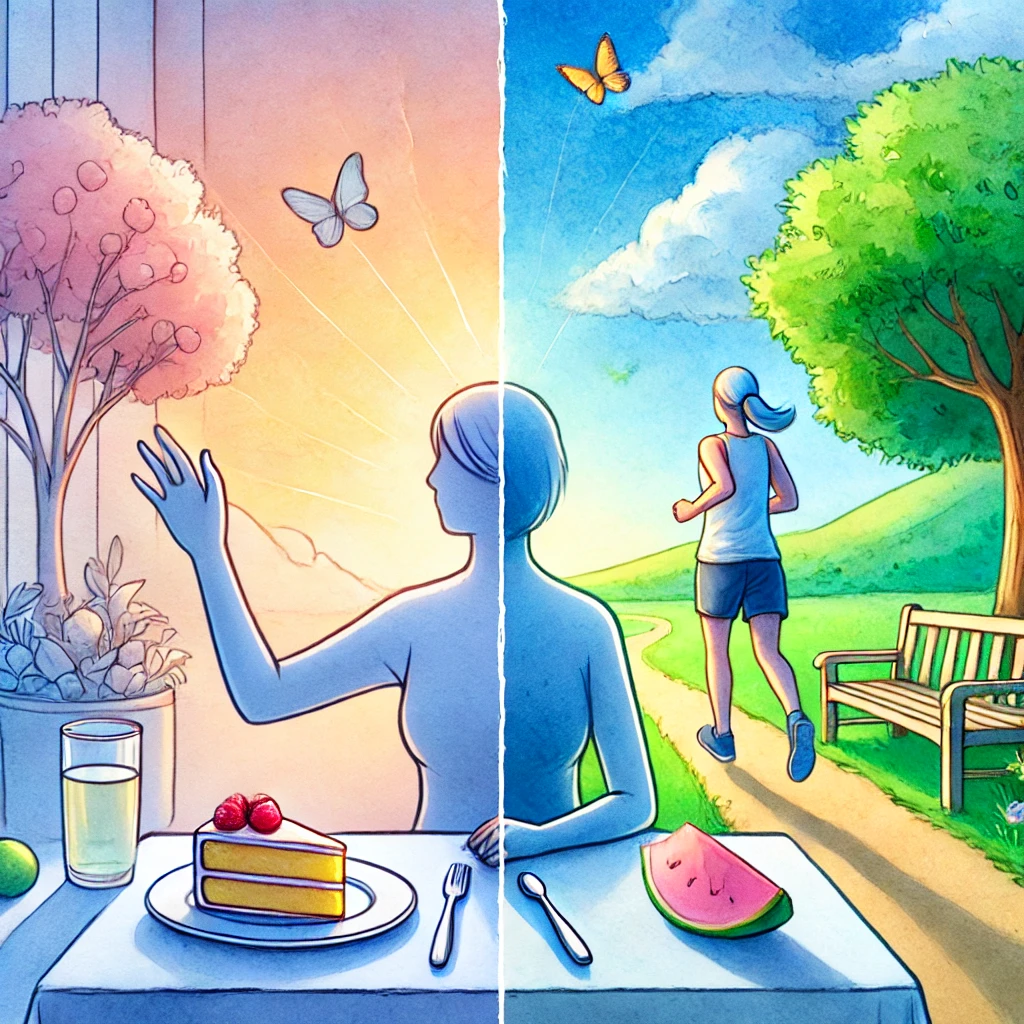[Image generated using GenAI]
Have you ever found yourself choosing an immediate reward, like a quick snack or an impulse purchase, over a more significant long-term benefit, such as improved health or financial security? If so, you’re not alone. This behavior is rooted in a psychological bias known as delay discounting—a tendency to devalue rewards as they become more delayed in time.
The Science of Delay Discounting
Delay discounting explains why we are more likely to prioritize short-term gratification over future benefits. It suggests that the perceived value of a reward diminishes the longer we have to wait for it. This phenomenon is especially pronounced in what’s known as hyperbolic discounting, where the rate of value decline isn’t consistent over time.
For example:
- A $100 reward today might feel far more appealing than $150 a month from now, even though the latter offers greater value.
- Similarly, indulging in behaviors like smoking or impulse shopping provides instant pleasure while overshadowing the long-term costs to health or financial well-being.
This bias has broader implications, too. Issues like climate change inaction stem from delay discounting, as we prioritize short-term conveniences over addressing long-term environmental consequences.
Combating Delay Discounting: Connecting with Your Future Self
The good news is that we can counteract this bias by strengthening our connection to our future selves. Research suggests that imagining your future self—both the potential positive outcomes and the negative consequences of your current choices—can help you make decisions that align with long-term goals.
How to Put This into Practice:
- Visualize Your Future Self:
Picture yourself in the future based on the decisions you’re making today. For example:- If you’re tempted to stray from a healthy eating plan, imagine your future self enjoying better health and vitality—or struggling with the consequences of poor eating habits.
- Facing a financial decision? Envision the financial security your future self could enjoy if you save or invest wisely now.
- Make It Personal:
The goal isn’t to create an idealized version of yourself but to understand the tangible outcomes of your current actions. Studies, like those by Hershfield et al., show that this approach makes us more likely to prioritize long-term benefits over instant gratification. - Consider Both Outcomes:
Reflecting on both positive and negative possibilities can be especially powerful. For instance, thinking about the consequences of skipping exercise today—compared to how good it feels to stay consistent—can guide your choice in the moment.
Why It Matters
Delay discounting affects every aspect of life, from health and finances to broader societal issues. By understanding and addressing this bias, we can make more thoughtful decisions that benefit not just our immediate selves but also the person we aspire to be in the future.
So the next time you’re faced with a choice between short-term gratification and long-term gain, take a moment to picture your future self. What would they thank you for? This small mental shift might just be the key to turning short-term temptations into long-term success.


